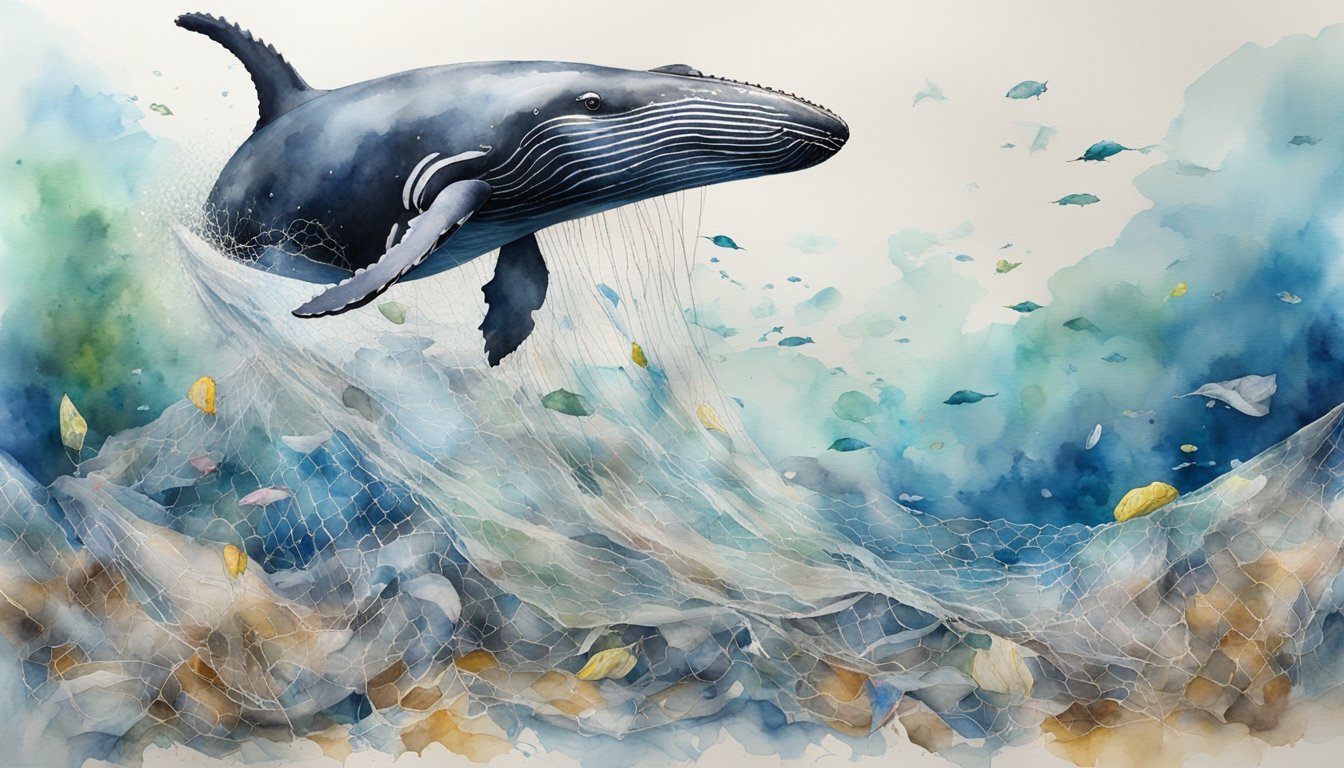Understanding Humpback Whales
Exploring the humpback whale, or Megaptera novaeangliae, offers insight into one of the most fascinating marine mammals. From their impressive physical features to their complex social behaviors, these baleen whales truly captivate the interest of scientists and whale enthusiasts alike.
Physical Characteristics
The humpback whale is easily identifiable by its massive size, with adults ranging from 14-17 meters in length and weighing up to 40 metric tons. Their most distinctive features include extraordinarily long pectoral flippers, which can span up to one-third of their body length, and the fluked tail that provides powerful propulsion. Each individual whale has unique pigmentation patterns on its flukes, which serve as an identification marker. The upper side of a humpback whale is generally a darker shade, while the underside is often lighter with varying degrees of white. Their heads and lower jaws are scattered with knob-like protrusions called tubercles, which are actually hair follicles and provide sensory function.
Species Classification
Humpback whales are a species of baleen whale falling under the order Cetacea, within the family Balaenopteridae, often referred to as the rorquals. This group includes some of the largest species of whales. Humpback whales are the sole members of the genus Megaptera, a term which means “large winged,” referring to their long flippers.
Habitat and Distribution
Humpback whales are found in all major oceans, from the polar waters of the Antarctic and Arctic to tropical seas. They migrate seasonally, traveling to cooler waters for feeding during the summer months and returning to warmer waters for breeding and calving in the winter. Notable regions include the coasts of Norway, Alaska, Canada, Australia, and the islands of Hawaii, Costa Rica, the Philippines, and Madagascar. Learn more about humpback whale habitats.
Behavior and Social Structure
Humpback whales are renowned for their complex behaviors, which include hunting techniques like bubble net feeding and acrobatic displays such as breaching, where the whale propels itself out of the water. They have intricate social structures and are often seen in pods, especially during migration and mating seasons. Communication plays a vital role in their interactions; their hauntingly beautiful songs are used to communicate and can travel great distances underwater. Humpback whale songs are composed of a series of moans, howls, cries, and other complex sounds that can last for hours and change gradually over time. Discover more on humpback whale behavior.
Each of these aspects contributes to the wonder of the humpback whale, a marine mammal that continues to intrigue and teach us more about life in the ocean depths.
Conservation and Threats

The conservation of humpback whales has been a focal point of marine biology due to the severe threats they face. These majestic creatures are vital to ocean ecosystems but encounter numerous challenges that hinder their survival and recovery.
Feeding Behavior and Diet
Humpback whales are predominantly found in regions abundant with their prey, consisting of krill, small fish, and plankton. They engage in complex feeding methods, such as the bubble net feeding technique, that allow them to capture schooling fish and crustaceans efficiently.
Migration Patterns
These whales are known for one of the longest migrations of any mammal on Earth, traveling thousands of miles between feeding grounds in cooler regions during summer and breeding grounds in warmer climates during winter. This journey is critical to their life cycle, encompassing the breeding season and fostering new calves.
Human Impact and Recovery Efforts
Once on the brink of extinction due to commercial whaling, the humpback whale populations are now increasing, thanks in part to international protection efforts and a moratorium on whaling. However, they still face significant threats, including entanglement in fishing gear, vessel strikes, and climate change. Conservation groups and government agencies use methods like photo-identification to track and study populations, aiding in the ongoing recovery of humpback whales. Whale-watchers around feeding and breeding grounds, such as Hawaii and Greenland, also contribute to conservation by participating in responsible and informative tourism.

